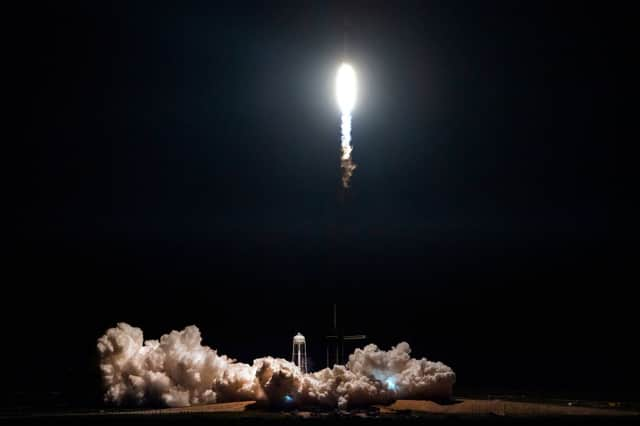Here's how to see Elon Musk's latest space satellites as they launch


A SpaceX Falcon 9 rocket will launch 60 Starlink satellites from Space Launch Complex 40 at Cape Canaveral Air Force Station in Florida this week.
The launch is the latest step in Elon Musk's plan to launch a constellation of satellites to provide internet access to remote areas.
Advertisement
Advertisement
The satellites will join Musk's growing broadband internet "megaconstellation" in orbit, a project which comes with an estimated cost of $10bn.
To date, 120 of the satellites have been launched, with this month's launch bringing the total up to 180. Musk plans to eventually have 42,000 in orbit.
When are the satellites launching?
The original plan was for the Starlink satellites to launch from Cape Canaveral Air Force Station in Florida on 27 January.
But due to bad weather - specifically high upper level winds - the launch was delayed.
Advertisement
Advertisement
Now SpaceX is targeting no earlier than Wednesday 29 January at 2.06pm UK time.
How can I watch the launch live?
SpaceX will be broadcasting the launch live through their website, which can be found at spacex.com/webcast.
What is Starlink?
The goal of the Starlink project is to provide constant, high-speed internet access to users around the world.
This would be achieved through a constellation of broadband internet satellites operating in low Earth orbit, 341 miles above Earth - much lower than traditional communications satellites.
Advertisement
Advertisement
Users on the ground will need only a small terminal no bigger than a laptop to gain access.
"Starlink will provide fast, reliable internet to locations where access has been unreliable, expensive, or completely unavailable," the company wrote in its Starlink mission description.
Musk has said that SpaceX will need at least 400 satellites in orbit to offer "minor" broadband coverage, and at least 800 to provide "moderate" coverage.
Why are the satellites controversial?
Astronomers have warned that Elon Musk's internet satellites are already disrupting data collection from the night sky, as the campaign against space junk continues apace.
Advertisement
Advertisement
Clarae Martínez-Vázquez, an astronomer observing the Dark Energy Camera (DECam) at the Cerro Tololo Inter-American Observatory (CTIO) in Coquimbo, Chile, witnessed a train of Starlink satellites crossing the skies in November, heavily affecting the camera's exposure.
“Our DECam exposure was heavily affected by 19 of them,” Ms Martínez-Vázquez wrote on Twitter. “The train of Starlink satellites lasted for over five minutes!! Rather depressing… This is not cool!”
Mr Musk's satellites left trails across the camera's field of view, disrupting its collected data.
The International Astronomical Union (IAU) expressed concern over the use of such constellations in June, warning they could threaten both the darkness of the sky (as essential to furthering human understanding of the universe) and the protection of nocturnal wildlife.
Advertisement
Advertisement
"Firstly, the surfaces of these satellites are often made of highly reflective metal, and reflections from the Sun in the hours after sunset and before sunrise make them appear as slow-moving dots in the night sky," it said in a statement.
"Although most of these reflections may be so faint that they are hard to pick out with the naked eye, they can be detrimental to the sensitive capabilities of large ground-based astronomical telescopes, including the extreme wide-angle survey telescopes currently under construction.
Concerns have also been raised over the satellites' potential to contribute to space junk floating around orbit, after Mr Musk's SpaceX confirmed three of the 60 satellites launched last year were no longer responding to commands and were effectively dead.
Sending many satellites into orbit could also heighten the risk of collisions with other circling bodies.